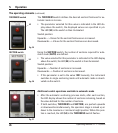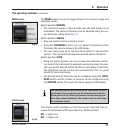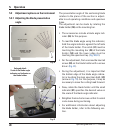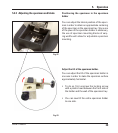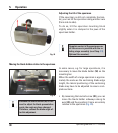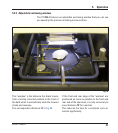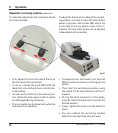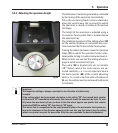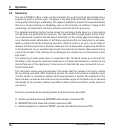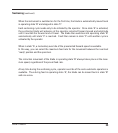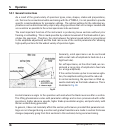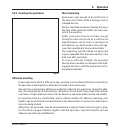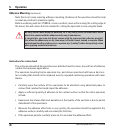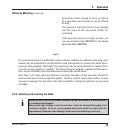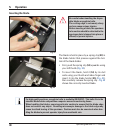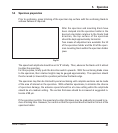
34
Operating Manual V 1.1 – 01/2010
5. Operation
The Leica VT1000 A offers a wide variety of options for sectioning fixed and unfixed tissue
samples of plant or animal origin. It employs a vibrating blade principle, which allows sec-
tioning without freezing or embedding. This makes it possible to prevent the unwanted effects
that occur during freezing or embedding, such as the formation of artifacts, change of the
morphology, the impairment of enzyme activities and other harmful processes.
The patented vibrating blade principle moves the sectioning blade edge in a reciprocating
arcuate path as it penetrates the specimen. The reduced effective edge angle from the trans-
verse movements, together with the lateral distribution of the cutting edge penetrating pres-
sure, minimize elastic deformation of soft tissue specimens that are simply held or encapsu-
lated in position during the sectioning operation. Uniform sections, as such, can be made of
delicate soft tissue specimens. Sections made are free of observable compressive distortion
in the direction of cut, as would be typical with conventional microtomes. Because the tissue
cells on the surface of the sections are not damaged, the ultrastructure in the sections is also
kept intact.
The sectioning process takes place in a specimen bath. The liquid serves as a lubricant for
the blade; it also keeps the specimen temperature constant and maintains or reinforces the
desired features of the specimens. It also serves to facilitate the easy retrieval of the sec-
tions from the bath.
The instrument works semi-automatically; this means that the operator only has to initiate
the sectioning operation. After finishing a section, the instrument remains in standby mode
until the section is removed or another sectioning operation is started. The amplitude of the
blade vibration as well as the feed rate and presentation angle of the blade can be adjusted
individually by the operator, making it possible to attain optimum results for a wide variety of
specimens.
There are essentially three operating states for the Electronics Assembly:
A. Sectioning blade advancing FORWARD with vibratory movement ON.
B. RETRACTION of the blade with vibratory movement OFF.
C. Sectioning blade in a rearmost "READY" position with vibratory movement OFF.
5.3 Sectioning



